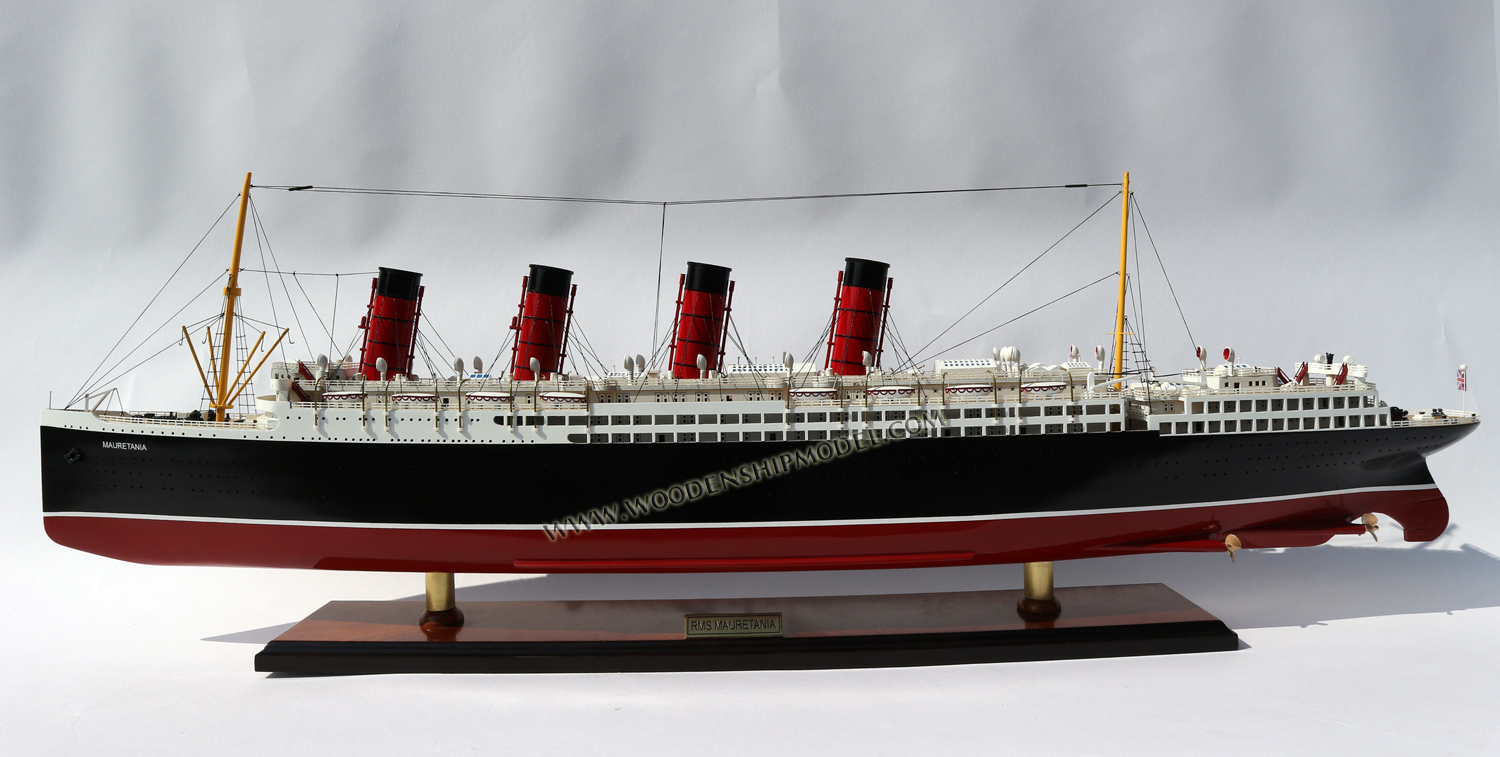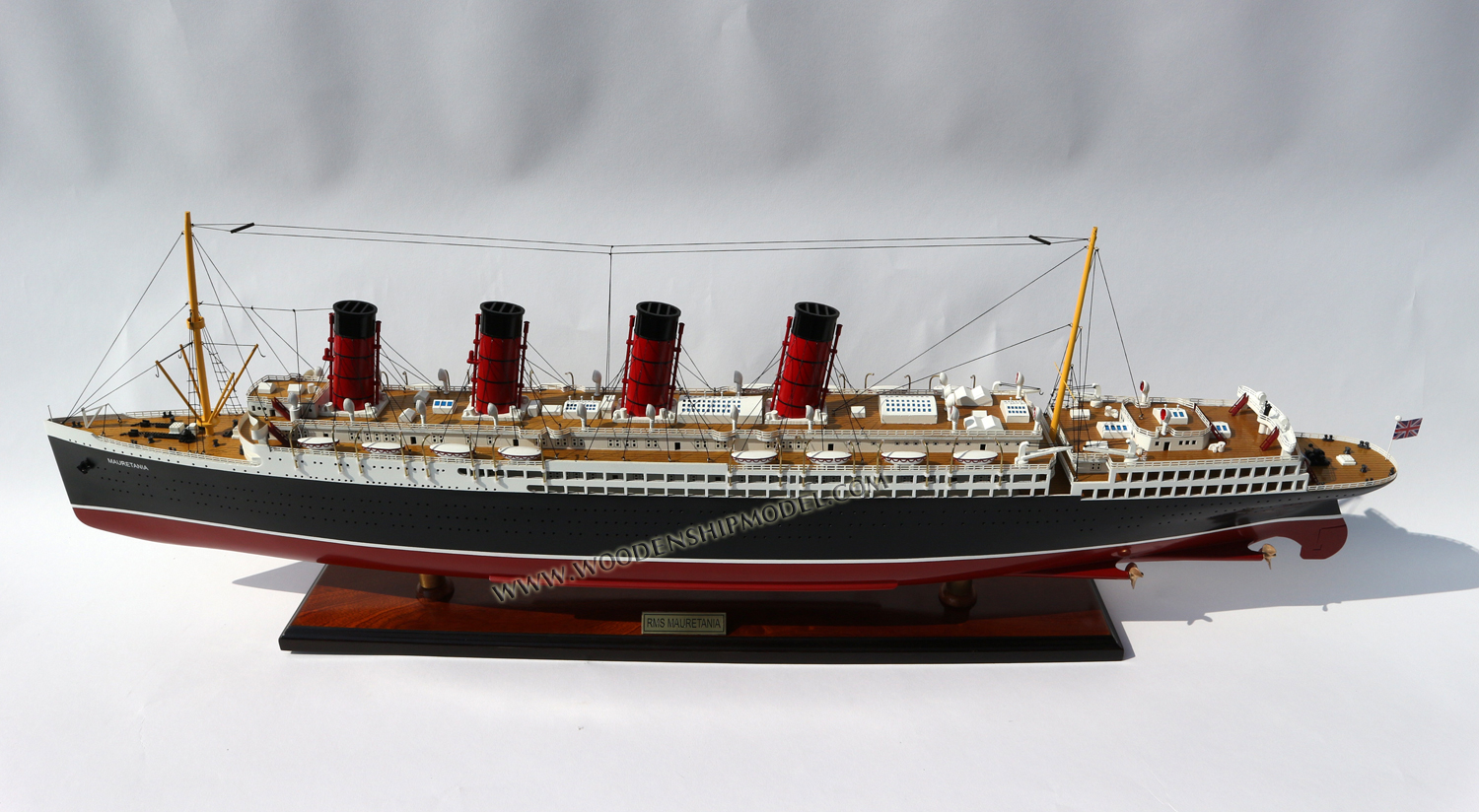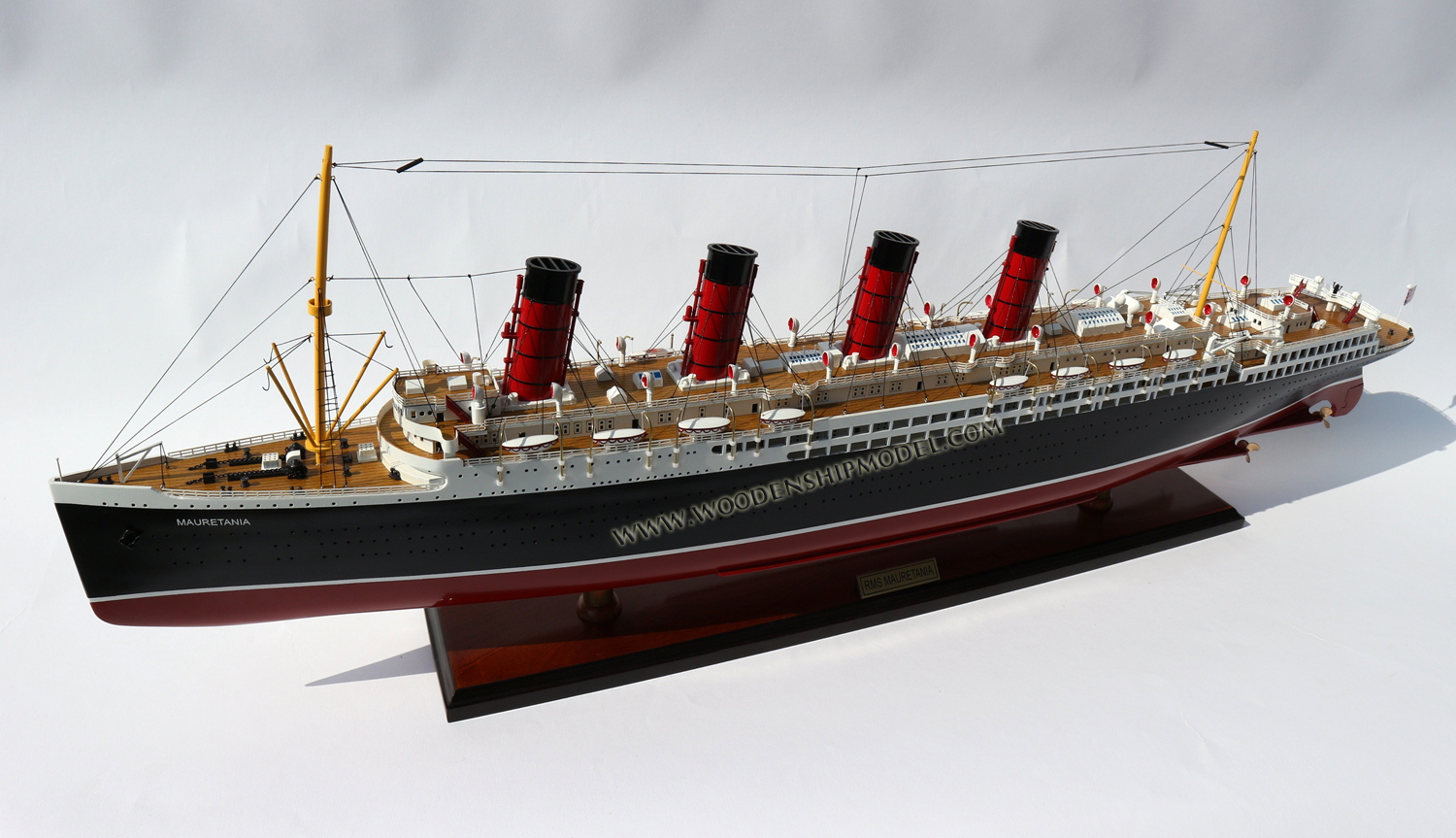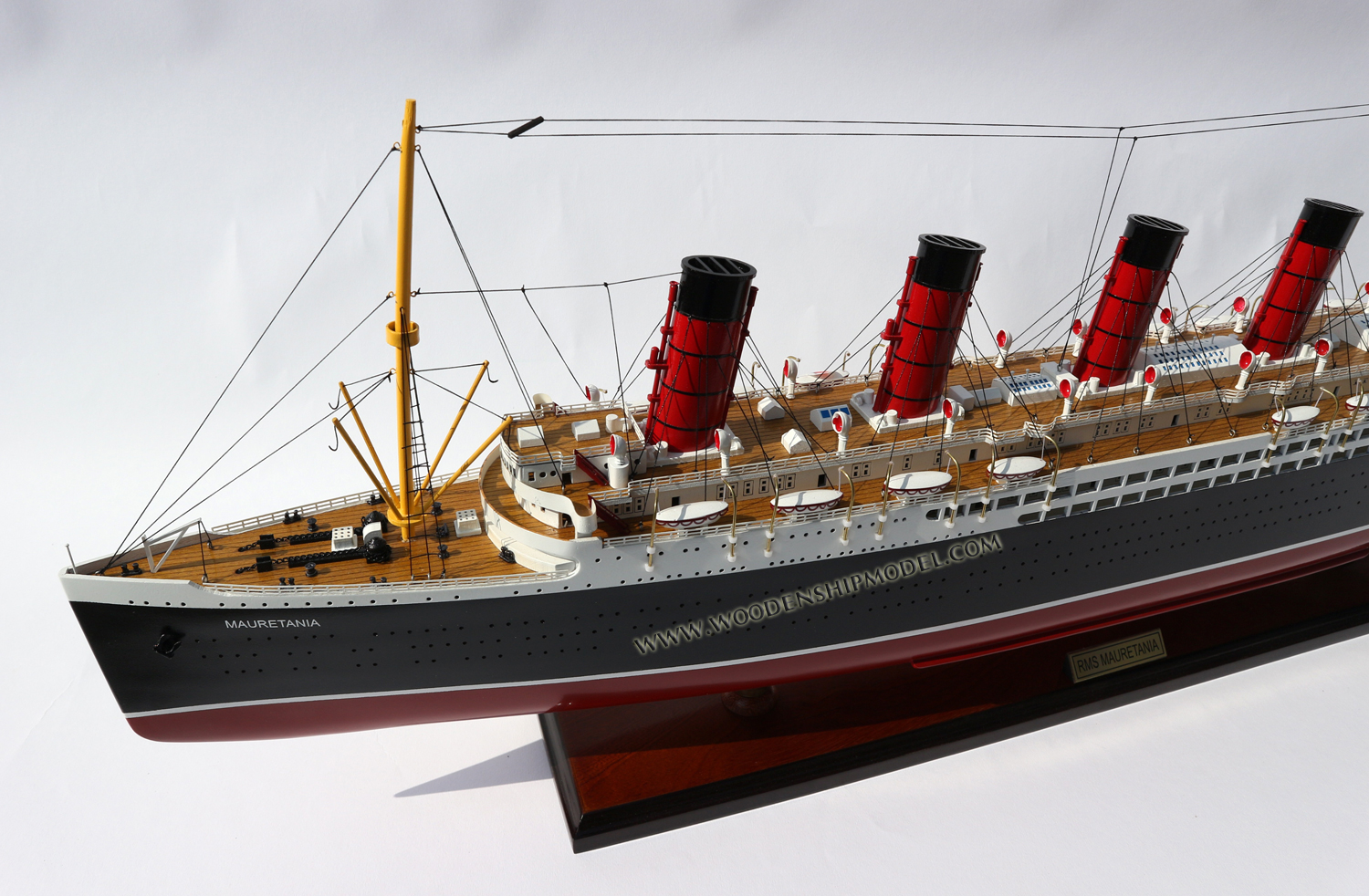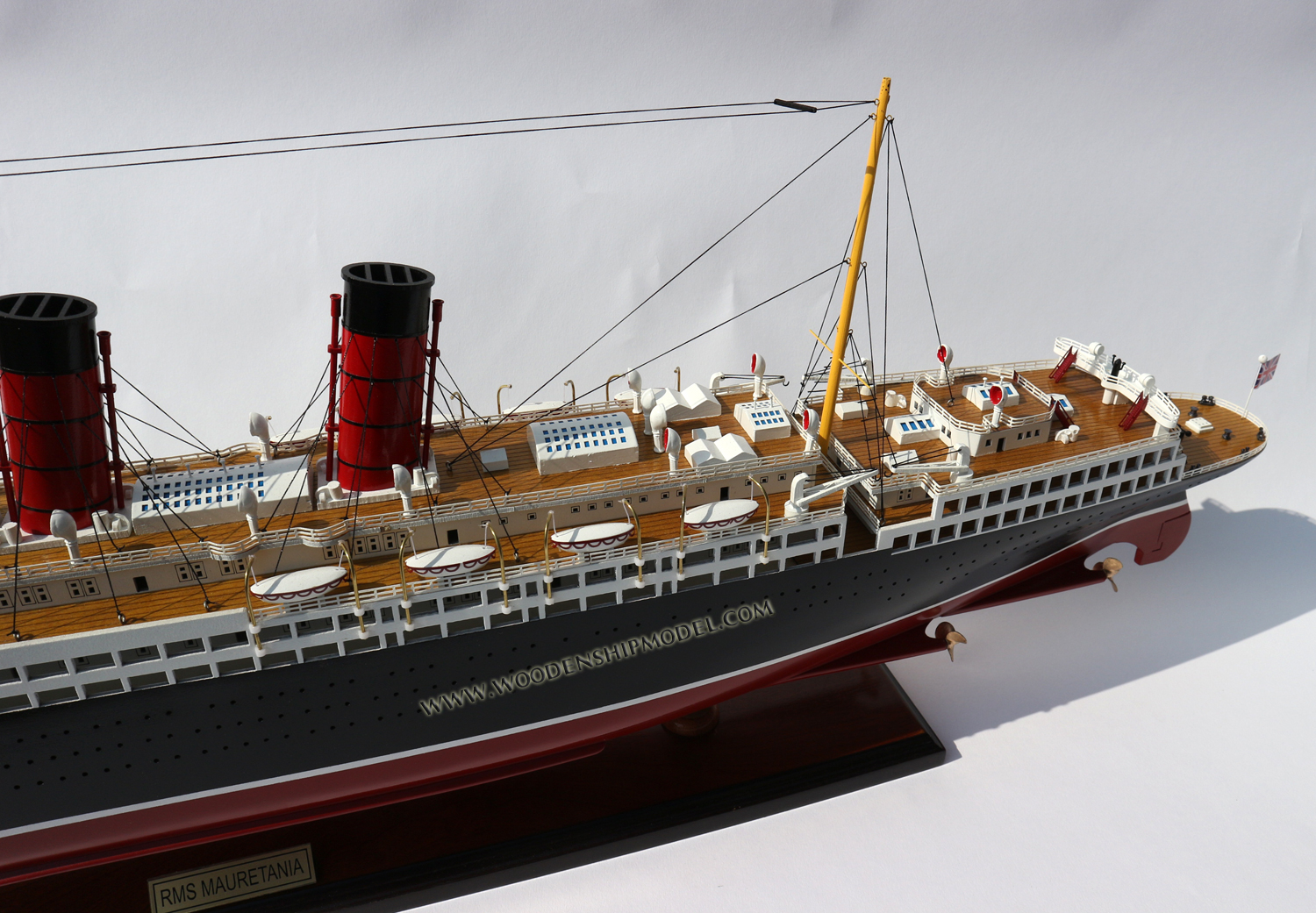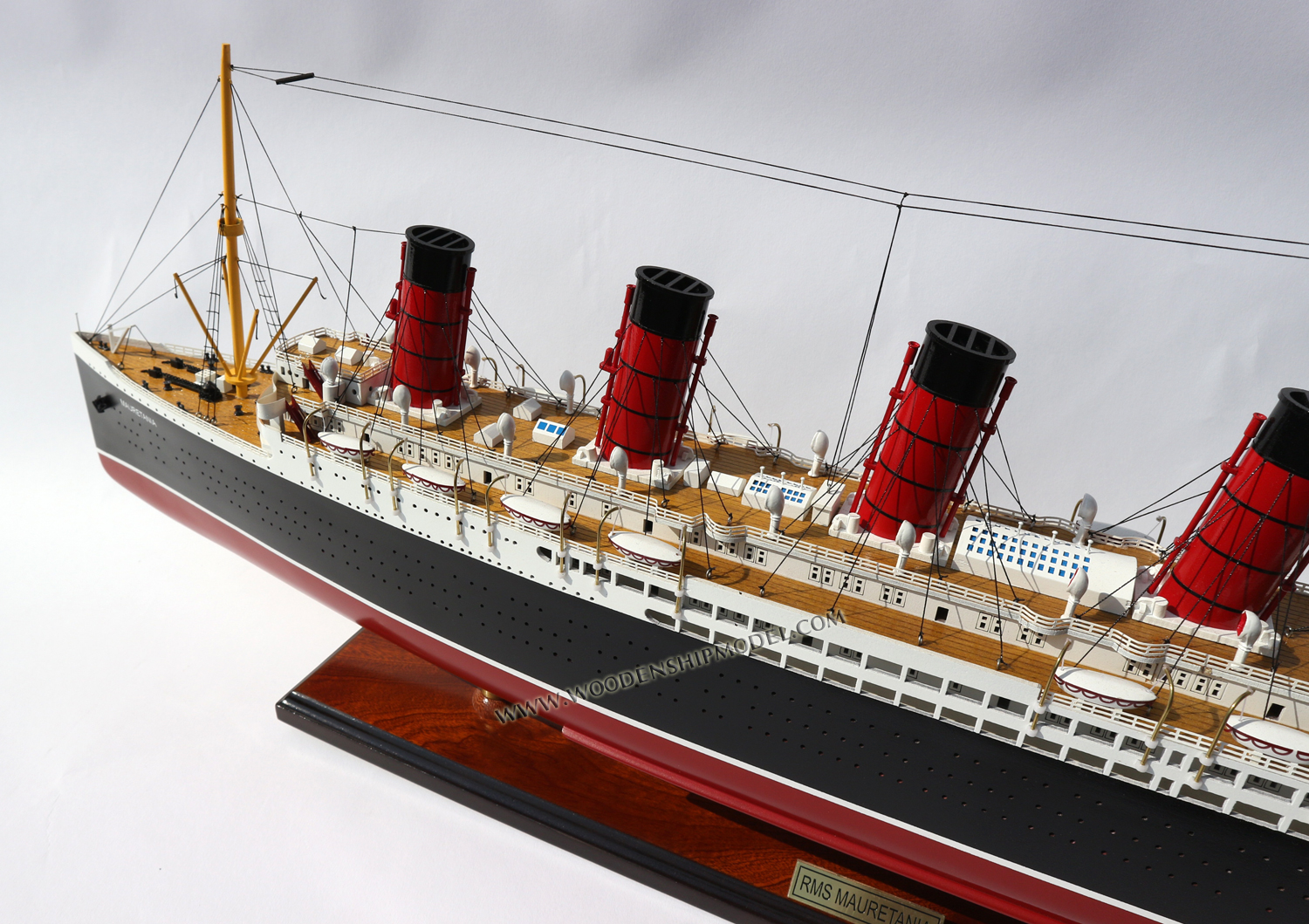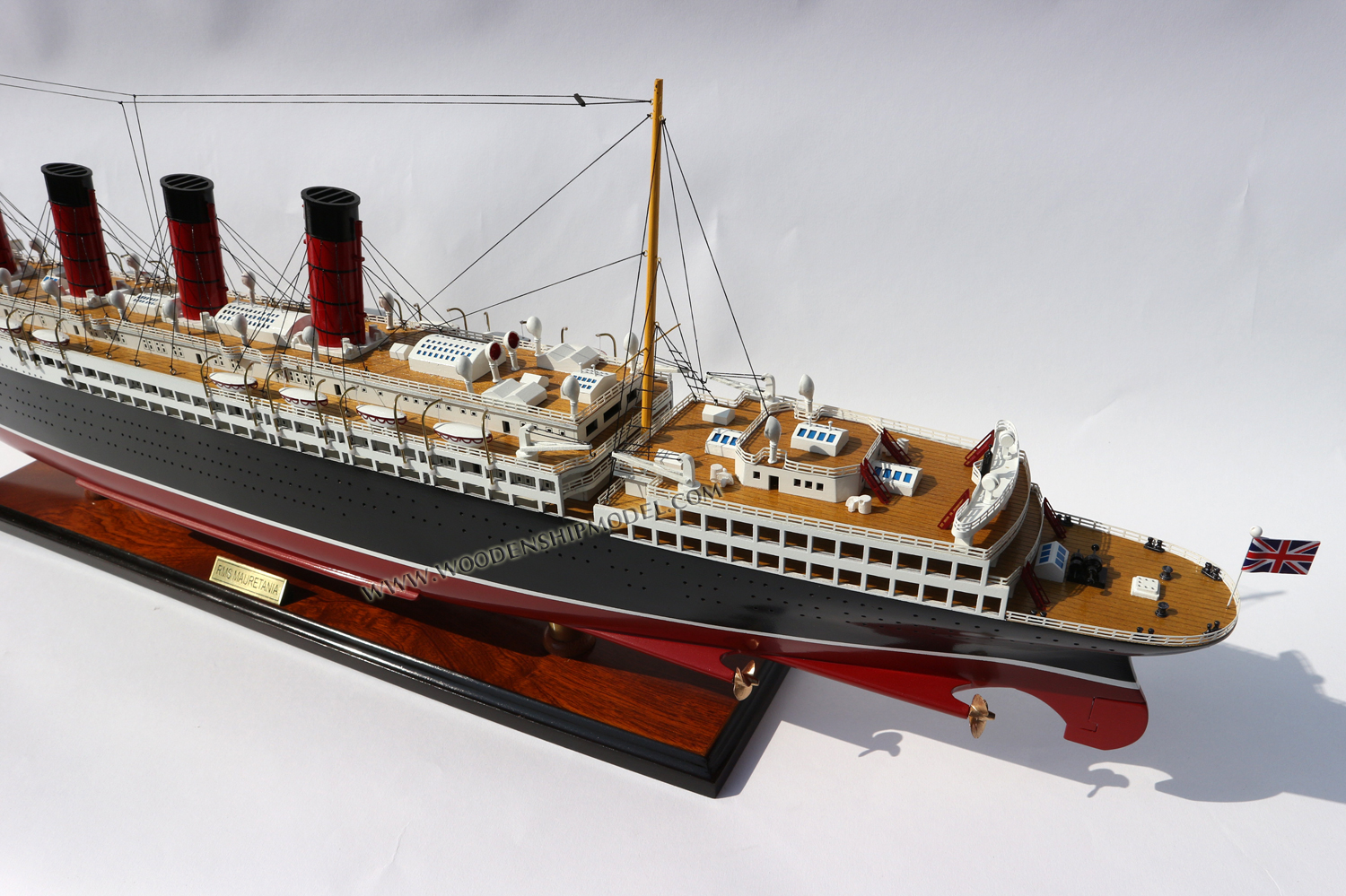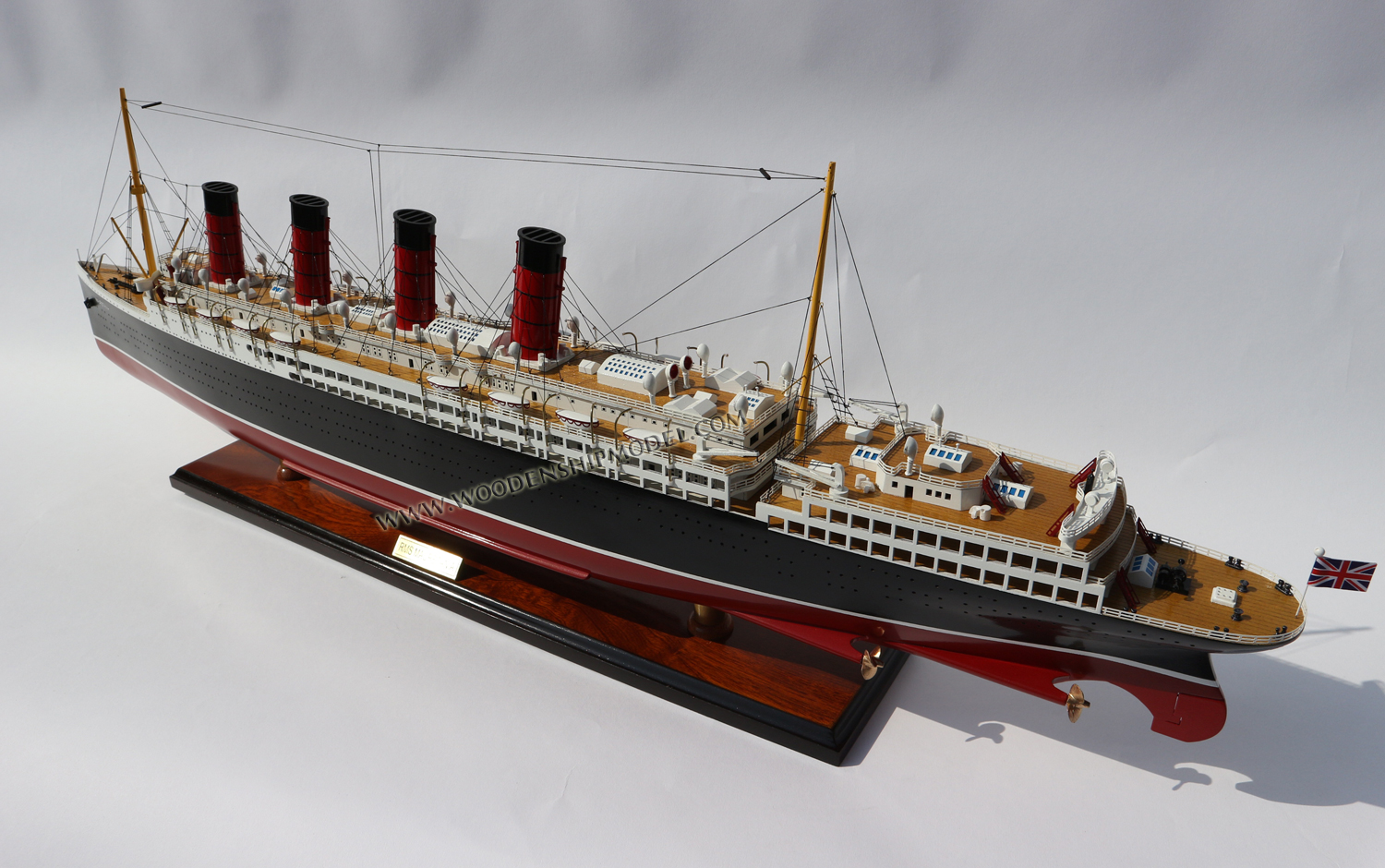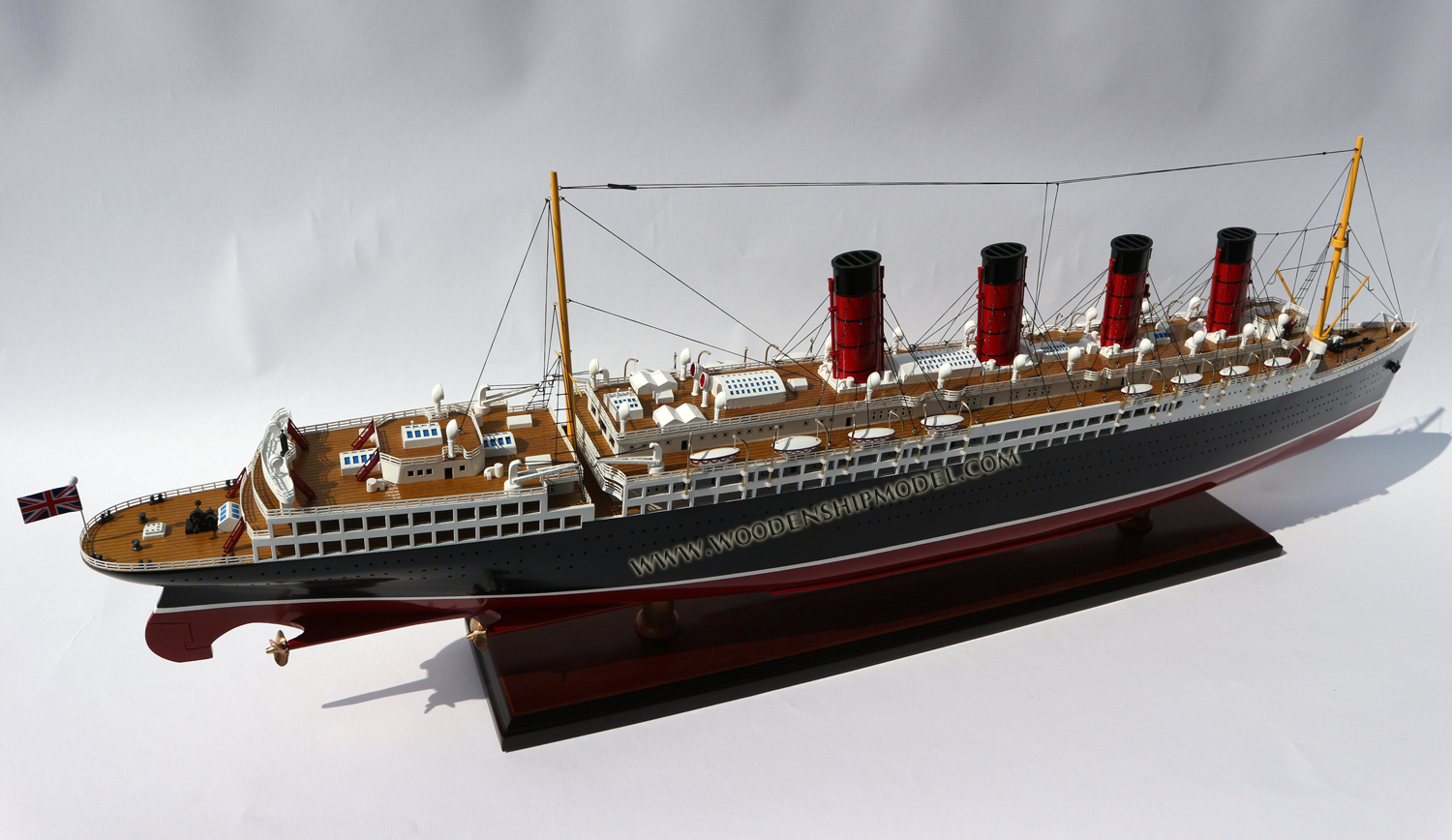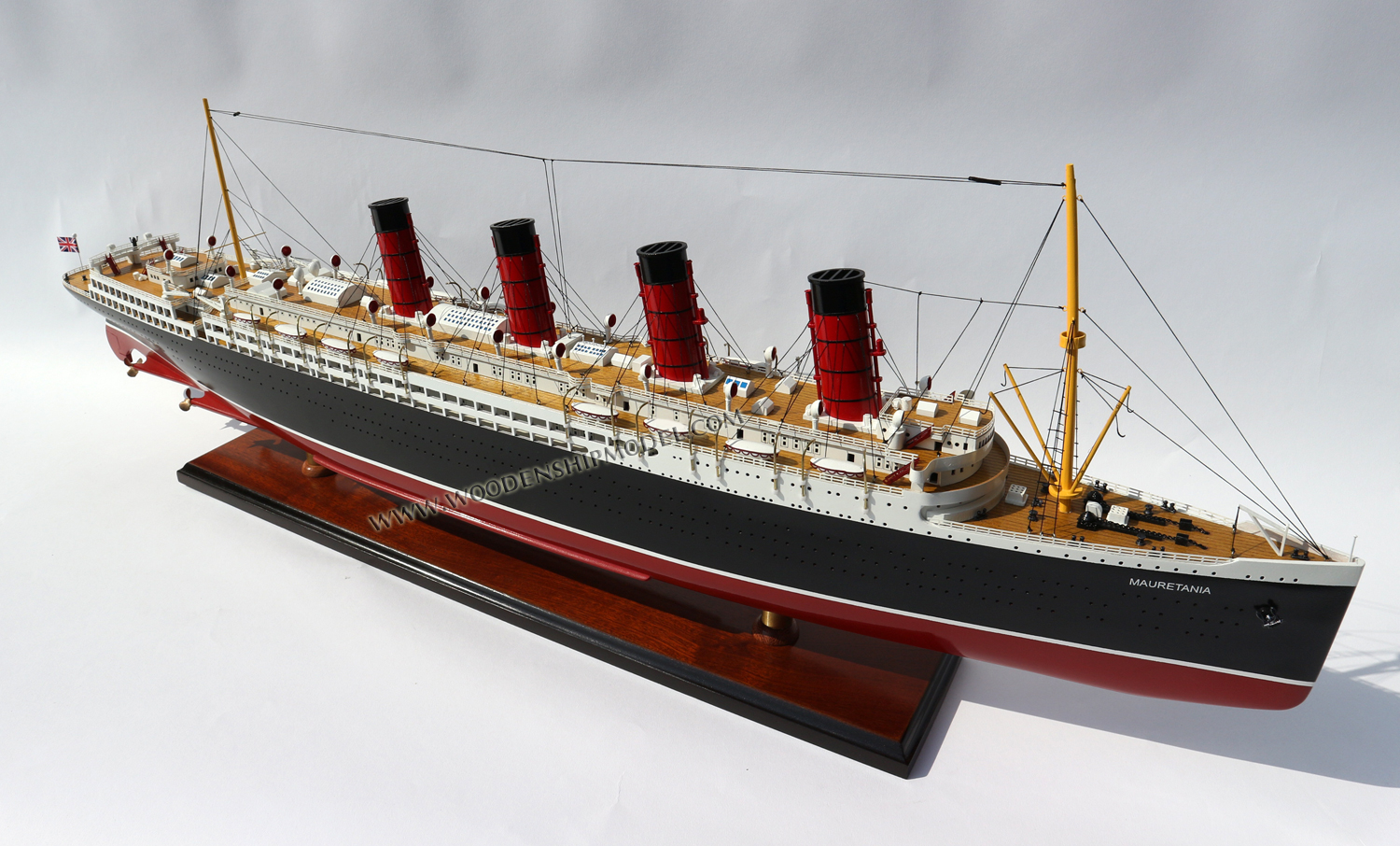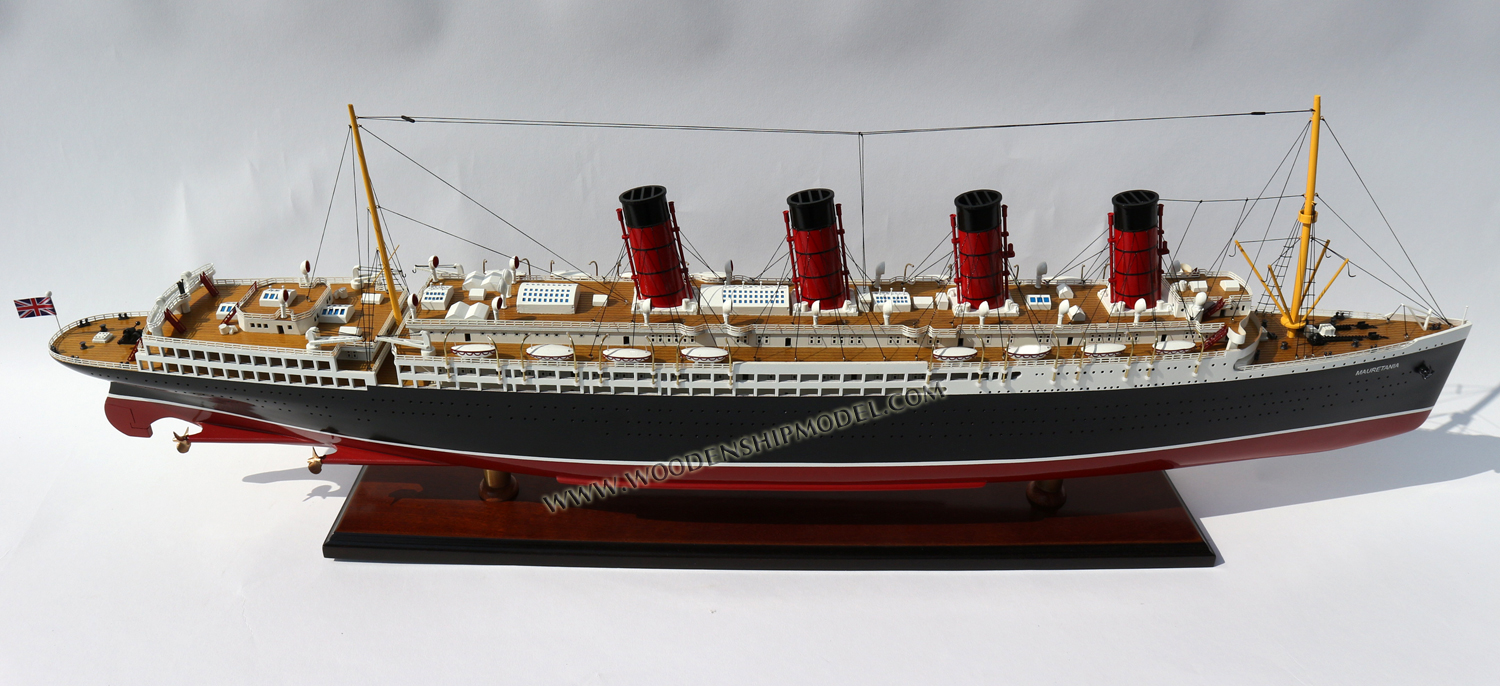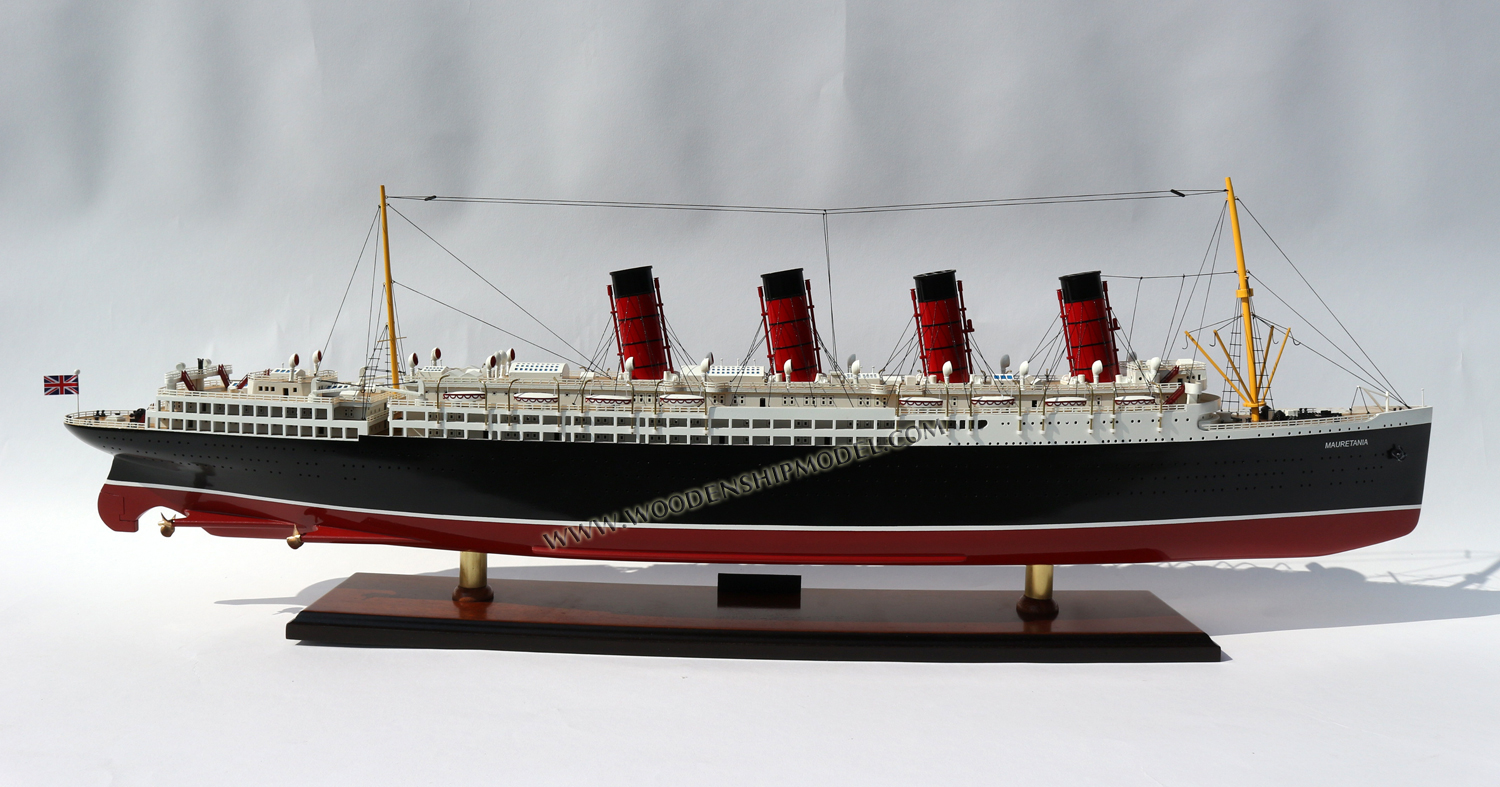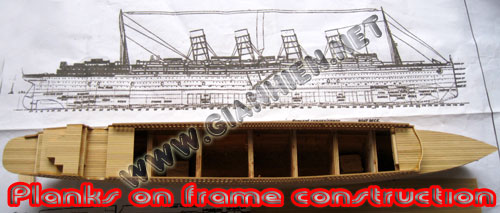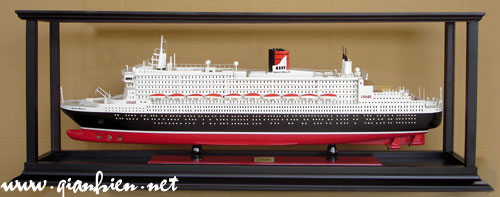|
RMS & HMHS
MAURETANIA
History in brief
RMS Mauretania
(also known as "Maury"), sister ship of the Lusitania, was a
Lusitania-class ocean liner built by Swan, Hunter & Wigham
Richardson at Wallsend, Tyne and Wear for the British Cunard
Line, and launched on 20 September 1906. At the time, she
was the largest and fastest ship in the world. Particularly
notable was her steam turbine propulsion, which was a
revolutionary development in ocean liner design. Mauretania
became a favourite among the passengers, attributable to her
luxury, speed, and safety. After capturing the Blue Riband
for fastest transatlantic crossing during her 1907 inaugural
season, Mauretania held the speed record for twenty-two
years.
The ship's
name was taken from Mauretania, a ancient Roman province on
the northwest African coast, not related to the modern
Mauritania. Similar nomenclature was also employed by
Mauretania's sister ship, the Lusitania, which was named
after the Roman province directly north of Mauretania,
across the Strait of Gibraltar.
History in details
Overview
In 1897 the
German liner SS Kaiser Wilhelm der Grosse became the largest
and fastest ship in the world. With a speed of 22 knots (41
km/h), it snatched the Blue Riband from Cunard Line's
Campania and Lucania. At around the same time American
financier J. P. Morgan’s International Mercantile Marine Co.
was attempting to monopolize the shipping trade, and had
already acquired Britain's other major transatlantic line
White Star. In the face of these threats the Cunard Line was
determined to regain the prestige of ocean travel back not
only to the company, but also to Great Britain. In 1903,
Cunard Line and the British government reached an agreement
to build two superliners, the Lusitania and Mauretania, with
a guaranteed service speed of no less than 24 knots, the
British government were to loan £2,600,000 for the
construction of Mauretania and Lusitania at an interest rate
of 2.75% to be paid back over twenty years with a
stipulation that the ships could be converted to Armed
Merchant Cruisers if needed, also to fund these ships
further the admiralty arranged for Cunard to be paid
£150,000 per year increase to their mail subsidy.
Design and
construction
The Mauretania
was designed by Cunard naval architect Leon Peskett with
Swann Hunter working from the plans struck for Lusitania
which was the premier ship of the class. Peskett's original
configuration for the ships in 1903 was a three-funnel
design when reciprocating engines were destined to be the
powerplant. A giant model of the ships in this configuration
appeared in Shipbuilder's magazine. Cunard in 1904 decided
to change powerplants to Parson's new turbine technology and
Peskett then implemented a fourth funnel to the ships in
order to vent all of the turbines' powerful exhaust. Peskett,
at Cunard's behest, also designed the ships with a narrower
beam than normal for ships this size. This to streamline the
hulls for more speed through the waves, at the sacrifice of
stability, and both Lusitania & Mauretania developed
reputations for being rollers in rough seas.
Mauretania
during a speed trial off St AbbsIn 1906, Mauretania was
launched by the Duchess of Roxburghe. At the time of her
launch, she was the largest moving structure yet built, and
slightly larger in gross tonnage than her sister Lusitania.
The main visual differences between Mauretania and Lusitania
was that Mauretania was five feet longer and had different
vents (Mauretania had cowl vents and the Lusitania had oil
drum-shaped vents). Mauretania also had two extra stages of
turbine blades in her forward turbines making her slightly
faster than the Lusitania. The Mauretania and Lusitania were
the only ships with direct-drive steam turbines to hold the
Blue Riband; in later ships, reduction-geared turbines were
mainly used. Mauretania's usage of the steam turbine was the
largest yet application of the then-new technology,
developed by Charles Algernon Parsons. During speed trials,
these engines caused significant vibration at high speeds;
in response, Mauretania received strengthening members and
redesigned propellers before entering service, which reduced
vibration.
Mauretania was
designed to suit Edwardian tastes, with twenty-eight
different types of wood used in her public rooms, along with
marble, tapestries, and other furnishings. Wood paneling for
her first class public rooms was meticulously carved by
three hundred craftsmen from Palestine. The multi-level
first class dining saloon was decorated in François I style
and topped by a large dome skylight. A series of elevators,
then a rare new feature for liners, were installed next to
Mauretania's grand staircase. A new feature was the Verandah
Café on the boat deck, where passengers were served
beverages in a weather-protected environment.
Early career
Mauretania
left Liverpool on her maiden voyage on 16 November 1907
under the command of her first captain, John Pritchard and
later that month captured the record for the fastest
eastbound crossing of the Atlantic with an average speed of
23.69 knots (43.87 km/h). In September 1909, the Mauretania
captured the Blue Riband for the fastest westbound
crossing—a record that was to stand for more than two
decades. In December 1910 Mauretania broke loose from her
moorings while in the River Mersey and attained damage that
caused the cancellation of her special speedy Christmas
voyage to New York. In a quick change of events Cunard
rescheduled Mauretania's voyage for Lusitania under the
command of James Charles (who was future commodore of the
line) which had just returned from New York. Lusitania
herself completed Christmas crossings for her sister,
carrying revellers back to New York. In 1912 both King
George and Queen Mary were given a special tour of,
Mauretania, then Britain's fastest merchant vessel. This
further added distinction to the ship's reputation. On 26
January 1914, while Mauretania was in the middle of annual
refit in Liverpool, four men were killed and six were
injured when a gas cylinder exploded while they were working
on one of her steam turbines. The damage was minimal and she
returned to service two months later.
World War I
Shortly after
Great Britain declared war on Germany on 4 August 1914,
Mauretania and Aquitania were requested by the British
government to become an armed merchant cruiser, but their
huge size and massive fuel consumption made them unsuitable
for the duty; leading to them resuming their civilian
service on 11 August. Later, due to lack of passengers
crossing the Atlantic, Mauretania was laid up in Liverpool
until May 1915, when her sister ship Lusitania was sunk by a
German U-boat. Mauretania was about to fill the void left by
Lusitania, but she was ordered by the British government to
serve as a troopship to carry British troops during the
Gallipoli campaign. She avoided becoming prey for German
U-boats because of her high speed and the seamanship of her
crew.
HMHS
MauretaniaWhen combined forces from the British empire and
France began to suffer heavy casualties, Mauretania was
ordered to serve as a hospital ship, along with her fellow
Cunarder Aquitania and White Star's Britannic, in order to
treat the wounded until 25 January 1916. Seven months later,
Mauretania once again became a troop ship when requisitioned
by the Canadian government to carry Canadian troops from
Halifax to Liverpool. Her war duty was not yet over when the
United States declared war on Germany in 1917, and she
carried thousands of American troops until the end of the
war.
As a
troopship, Mauretania received dazzle camouflage, a form of
abstract color scheming, in an effort to confuse enemy
ships. The dazzle painting was not used when Mauretania
served as a hospital ship. In medical service the vessel was
painted white with large medical cross emblems surrounding
the vessel.
Post-war
career
Mauretania returned to civilian service on 21 September 1919. Her
busy sailing schedule prevented her from having an extensive
overhaul scheduled in 1920. However, in 1921 Cunard Line
removed her from service when fire broke out on E-deck and
decided to give her a much-needed overhaul. She returned to
the Tyne shipyard of her birth, where her boilers were
converted to oil-firing, and returned to service in March
1922; however, it was also noticed by Cunard that Mauretania
was still struggling to maintain her service speeds and it
was apparent that her once-revolutionary turbines were in
desperate need of overhaul. In 1923, a major overhaul was
begun in Southampton, involving the dismantling of
Mauretania's turbines. Halfway through the overhaul, the
shipyard workers went on strike and the work was halted, so
Cunard had the ship towed to Cherbourg, where the work was
completed at another shipyard. In May 1924, the ship
returned to Atlantic service.
The
Mauretania's Second Class Smoking Room.In 1928 Mauretania
was modernised with new interior design and in the next year
her speed record was broken by a German liner, the Bremen,
with a speed of 28 knots (52 km/h). On 27 August, Cunard
permitted the former ocean greyhound to have one final
attempt to recapture the record from the newer German liner.
She was taken out of service and her engines were modified
to produce more power to give a higher service speed;
however, this was still not enough. The Bremen simply
represented a new generation of ocean liners that were far
more powerful and technologically advanced than the aging
Cunarder. Even though Mauretania could not outrace her
German rival, the ship did beat her own speed records both
eastbound and westbound. In 1929 Mauretania collided with a
train ferry near Robbins Reef Light; fortunately, no one was
killed or injured and her damage was quickly repaired. In
1930, with a combination of the Great Depression and newer
competitors on the Atlantic run, Mauretania became a
dedicated cruise ship. When Cunard Line merged with White
Star Line in 1934, Mauretania, along with Olympic, Majestic
and other aging ocean liners, were deemed surplus to
requirements and withdrawn from service.
Demise
Cunard
withdrew Mauretania from service following a final eastward
crossing from New York to Southampton in September 1934. The
final crossing was made at an average speed of 24 knots (her
original contractual speed stipulation for her mail
subsidy), and Mauretania was then laid up at Southampton
awaiting her fate next to the former one time White Star
Line flagship Olympic. Thus marked the end of twenty-eight
years of service with Cunard.
In May 1935
her furnishings and fittings were put up for auction and of
the 1st of July that year she departed Southampton for the
last time to T.W Wards shipbreakers at Rosyth. One of her
former captains, the now retired commodore Sir Arthur
Rostron (captain of the RMS Carpathia during the Titanic
rescue), came to see her on her final departure from
Southampton. Rostron refused to go aboard Mauretania before
her final journey, stating that he preferred to remember the
ship as when he commanded her.
En route to
the breakers, Mauretania stopped at her birthplace the Tyne
for half an hour, where she drew crowds of sightseers and
was boarded by the Lord Mayor of Newcastle. The mayor bid
her farewell from the people of Newcastle, and her last
captain, A.T. Brown, then resumed his course for Rosyth. The
ship passed under the Forth Bridge (for which her masts had
to be cut down), and was delivered to the shipbreakers.
The demise of
the beloved Mauretania was protested by many of her fans,
including President Franklin D. Roosevelt who wrote a
private letter arguing against the scrapping.
Legacy
Some of the
furnishings from the Mauretania were installed in a
bar/restaurant complex in Bristol called the Mauretania Bar
(now Java Bristol), situated at the bottom of Park Street
(the hill leading to the Wills Memorial Building of Bristol
University) behind the Council House on College Green. The
lounge bar was paneled with mahogany, which came from her
first class library. The neon sign on the south wall still
advertises the "Mauretania," and her bow lettering was used
above the entrance. Additionally, the first class
reading-writing room has become the board room at Pinewood
Studios, west of London.
The Mauretania
is remembered in a song "Firing the Mauretania", with
versions collected separately by Redd Sullivan and Hughie
Jones. They both start "In 19 hundred and 24, I… got a job
on the Mauretania"; but then go on to say "shovelling coal
from morn till night" (not possible in 1924 as she was
oil-fired by then); the number of "fires" is said to be
either 64 or 34; but perversely the last verse on Hughie's
version says "trimmers" not "stokers", so perhaps this is a
reference to oil. |

